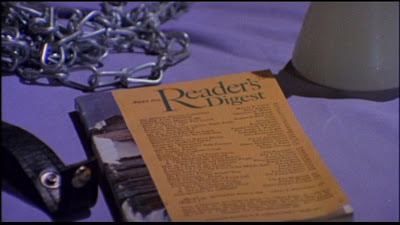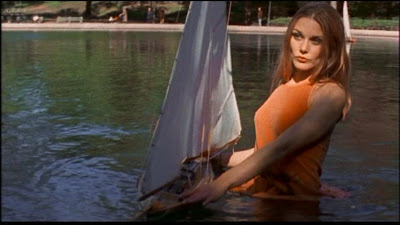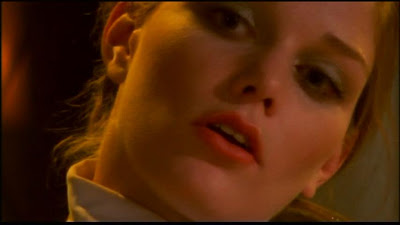
-Celia Rowlson-Hall in her mind-bending PROM NIGHT-
Hi Celia, first of all thank you so much for agreeing to participate in this Q&A. I just recently discovered your work and I must say that your short-films are some of the most exquisite and haunting pieces I have seen in some time, so it’s a thrill to have you stop by here.
To start off, can you tell us where you are from originally and what sparked your initial interest in the arts?
I'm from a very small town called Urbanna, Virginia. My parents definitely caused that spark. They put me into ballet, piano and art classes at a very young age and immediately I was drawn to dance.
Who were some of your early influences were growing up?
The poet Shel Silverstein, I wanted to be him. I signed my papers at school Celia Silverstein.
My babysitter, Christine Williams, was (and still is) simply the most loving person ever.
Before we talk about your films can you tell us a bit about your life as a choreographer and a dancer?
I went to college, University of North Carolina School of the Arts, for modern dance and choreography. After graduation I moved to New York and danced with two incredible choreographers- Monica Bill Barnes and Faye Driscoll. During that time I also choreographed my own work and presented it in various theaters and venues. I then began choreographing for film and music video, which opened me up to that world.
I know you won the prestigious Bessie Award in 2010. Can you talk a bit about that and what you were specifically awarded for?
Yes, I was a performer in a show called 837 Venice Blvd which was directed/choreographed by Faye Driscoll. All collaborators in the show, from the performers to the set designer, were awarded Bessie's for their contribution to the work. So I was awarded for my performance. I did a lot of singing, kicking, crying, punching, screaming and dancing in that piece so it felt really nice to be acknowledged!
One thing that really impresses me about your films, specifically Prom Night, is the remarkable way you incorporate your work as a choreographer, dancer and model into them. How important is your background in dance to your work as a filmmaker?

-Celia in her dazzling A STUDY IN COLOR-
It's essential. You don't see me speaking in my films for a reason! I best know how to communicate with my body and movement- so yes, it's very important! I also feel that the more I put "me" into my work, the clearer I can be with my story and intention.
Speaking of choreography and film, I loved the work you did with one of my favorite modern-bands Sleigh Bells. How did that come about and how were they to work with?
Sleigh Bells "Infinity Guitars" from Phil Pinto on Vimeo.
The casting director for that video, Zan Ludlum, is a friend of mine and got me that job. Since I was choreographing on the models, I didn't work with the band. I also enjoyed working with the director, Phil Pinto, he's very fun and laid back.
Moving to your work in front of and behind the camera, tell us about your early filmmaking ventures and perhaps mention a few favorites.

A still from Celia's mesmerizing PINATA-
Goodness, I feel like I am still in my early filmmaking ventures. I'm not working on any different "level" (budgets, collaborators etc.) than I was a few years ago when I started, so I feel like I'm still in the first phase.
Although it's easier to be out of the work for me to properly direct it, I must say I love being in the work- it's an additional challenge I really enjoy.
Are there any particular filmmakers that influence your work behind the camera? Also I sense a real love for both fashion and music in your films and I was hoping you might discuss that a bit as well.
When I got into filmmaking I didn't know a thing- but the past couple years I've been voraciously watching movies. I really love the work of Andrea Arnold, Roy Andersson, Lynne Ramsay, and Giorgos Lanthimos.
They influence me by reminding me to push myself to BE SPECIFIC, and keep going past your comfort zone- get deeper, get uglier, get weirder, get dangerous.
Okay, onto the amazing Prom Night. I was recently introduced to this startling film by a friend at Facebook and I have to give you big congratulations on it. Outside of how technically great it is, there is something about it that is both extremely moving and quite unsettling. How did the film come about and can you discuss some of the aspects that went into making it?
I have always wanted to be someone other than me and thought it was time to explore that. Somehow exploring it in the context of prom seemed right to me so I developed the dance solo first and then figured out the women I wanted to be and then worked with my amazing collaborators- Jae Song and Lindsey Hornyak. We spent many hours rehearsing, questioning, costuming, set dressing.
One of the major things that I loved about Prom Night is how open-ended it is as far as interpretations go. There was a comment over at Vimeo that echoed my thoughts on it in that it was a Ghost-story focusing on a young girl who plays out these particular prom-night fantasies on an endless loop for all eternity. I also had the thought that it could just be commenting on the different roles and stereotypes women are often forced to play…of course, both interpretations could be wrong, which is something I really appreciated about the film! Are there any thoughts on the meaning of the film you would like to share or are you happy with the ambiguity?
I'm really happy with the ambiguity and rather not say. It's very clear in my mind what I am communicating but it's neat to see all the interpretations!
You are clearly a very gifted young artist. Can we perhaps look for a feature-length project at some point in the future and what are some of your upcoming career plans in general?
Thank you so much, I really appreciate your words and interest in the work. That means a lot to me.
Yes you can expect a feature length from me soon. There's that tricky thing called "funding" to deal with first. Ha! But I'll figure out a way.

-Celia in her lovely ONE SUNDAY-
Thanks so much Celia for this! I hope it leads some more folks to your work and I can’t wait to see more of it. I wish you the best for 2012 and thanks again!
Thank you Jeremy!
...































































